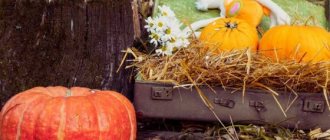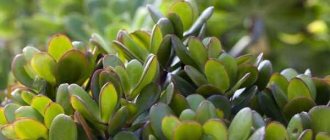In ancient times, it was extremely important for a person to predict the weather in order to understand whether it was possible to go hunting and when to plant plants. For centuries, people have closely monitored nature. Thus, knowledge was accumulated about which plants predict the weather. And this wisdom was passed on from parents to children, and has survived to this day. Even weather forecasters would envy the weather predictions of our grandparents.
Signs about indoor plants
If there are no indoor plants in the house, or they never bloom, then there are often scandals in this house. This sign may also have another justification. Flowers feel the energy of their owner and if it is negative, then the flowers will feel bad and will not take root.
A flower or even several suddenly withered in the house - a pleasant new thing is expected.
If a flower that is supposed to bloom in summer suddenly blooms in winter, this is a bad omen. Someone in the house may become very ill or even die. This same belief also applies to outdoor plants that have mixed up their flowering time.
There is another interpretation of untimely flowering of plants, many people prefer to believe in this: if a flower blooms at the wrong time, unexpected news will soon fly into the house.
If you hide the cut nails and a piece of hair of a person with fever in an aspen stump, he will soon recover.
There is also a sign that aspen can take away a child’s illness. If you hide several children's hairs in an aspen trunk at the height of the baby. As soon as the child grows a few centimeters, his illness will go away on its own.
A sick person can sit on the stump of a freshly cut down aspen tree - then his illness will leave him.
There is a slightly dishonest popular belief that if you steal the shoot of an indoor flower, or unnoticedly pull out a bush in someone else's front garden, then it will definitely be accepted, unlike something bought or given as a gift.
When you want to give a plant to another person, take a ransom , otherwise it will wither and will not take root with the new owner.
Signs based on observations
Weather prediction by plants is based on long-term observations of flowers, trees and herbs. Attentive people began to notice connections between the state of vegetation and weather changes. Thanks to this, our ancestors could predict cataclysms and rich harvests. All observations and notes were passed down from generation to generation - first orally and then in writing. Today they make up a huge collection of folk signs and beliefs about the weather based on herbs, trees and flowers.
Harbingers of frost and cold snap
The following signs and beliefs about plants and trees have long helped people prepare for severe frosts and harsh winters:
- The leaves of the trees flew off in an instant - we need to wait for a quick cold snap.
- The rowan gave a plentiful and rich harvest - the winter will be long and harsh. In this way, Mother Nature herself takes care of the birds.
- In the summer, sow thistles grew in the beds - signs say that there will be severe frosts.
- There are a lot of acorns on the oak tree - there will be many frosty days.
- On Pokrov, the cherry trees were decorated with green leaves - to wait for a harsh winter.
- The skin on the onion is thick and durable - a sign for cold weather and snow.
- There are an abundance of nuts in the forest and no mushrooms at all - the winter will be snowy and long.
What indicates warming is coming soon?
The following plants and flowers will tell you about the imminent warming and hot weather:
- The rowan is covered with large white flower caps - a sign of clear and hot weather.
- A lot of sorrel has grown in the beds - signs say that the summer will be sunny and warm.
- If a lot of juice flows out of the picked horsetail, wait for hot days.
- The larch became fluffy and opened its branches - to the warmth and sun.
- The violets have opened - summer is just around the corner.
- The fern leaves curled like flyers - signifying the heat.
Signs for rain and thunderstorms
In the modern world, people learn about the weather thanks to meteorological stations; forecasts from weather forecasters are broadcast on television and the Internet. However, it is not always possible to use modern technologies, so you can look at plants and flowers that will warn about rainy weather:
- according to folk superstitions, oak trees creak and “moan” before a hurricane;
- the sharp aroma exuded by honeysuckle will indicate precipitation;
- in wet weather, the scales on spruce cones close tightly together;
- resin appears on the bark of coniferous trees, indicating imminent bad weather;
- The rosehip buds are tightly closed - according to the sign, a storm is already close.
Can plants predict the weather?
Signs for the weather can be learned from plants. It’s very simple, the main thing is to carefully observe the surrounding nature and know about the wisdom of our ancestors.
When rowan produces a large harvest, we can say with confidence that the winter will be long and harsh. In this way, nature takes care of wintering birds, which should have enough food until spring.
There are signs associated with water lilies. The leaves of these beautiful flowers covered the entire surface of the reservoir - this means that frosts are no longer expected.
The coltsfoot appeared in the thawed patches - spring has begun and there will be no more snow.
Birch produces a lot of sap in the spring, which means summer will be wet and rainy.
When honeysuckle emits a pungent odor that spreads over a long distance from the plant itself, it will rain in less than a day.
The spruce lowered its branches and covered its cones - heavy rain is coming.
The leaves are flying from all the trees in unison - a harsh winter is approaching.
In rainy weather, spruce branches began to reach towards the sun, rising upward - the rains will soon end.
The birch tree did not shed its leaves until mid-October
The dandelion suddenly began to cover its flowers - it was about to rain.
The leaves first bloom on the birch - a dry summer is ahead; on alder – rainy and cold.
Birch leaves should turn yellow evenly throughout the entire tree, then next year’s spring will be even. If the leaves at the top turn yellow first, early spring will come, if below, late spring will come.
The birch will pubescent earlier than the maple - the summer will be dry; if it is later, it will be tormented by rain.
onion skin means a harsh winter is coming; thin skin on the onion foreshadows a warm winter.
If the rowan tree does not bloom for a long time, autumn will delight you with a large harvest of mushrooms.
When the roses fade, abundant dew will fall on the ground.
Folk signs about plants are very diverse. Some foretell the weather, others tell us about life circumstances, and others warn against dangers. Whether or not to believe folk signs is something everyone decides for himself, but many people know of cases when a person is given many hints, but despite this, he chooses the wrong path. You need to listen to the voice of nature and then it will become your faithful assistant.
Weather predictor herbs
Plants do not predict the weather as clearly as animals when they hide an hour before a storm or worry before an earthquake. However, with proper observation, you can still notice the signs of plants.
- In the early morning, a plentiful amount of dew on the grass means a favorable day awaits. Dry - rain soon. And when dew forms in the evening and stays until the morning, the weather will be sunny for a long time.
- Loosestrife (common grass) and aloe vera (common) release moisture before the coming rain.
- Drupe straightens the leaves and covers the berries with them to protect them from bad weather. Sweet clover folds its leaves before a thunderstorm.
- If the chickweed does not straighten out after dawn, clouds and clouds can be expected. In wet weather, burdock softens and ceases to be tenacious. But with the arrival of warmth and dryness, it spreads out the hooks and becomes tough.
- The fern folds its leaves before dry weather and, conversely, spreads them out when it rains. A blooming dandelion hides its yellow core and closes with a green rosette before bad weather. If you blow on a dandelion, you will see that the seeds are attached and are difficult to come off. Whereas in hot weather they easily fly apart.
- Buttercup and bindweed hide their flowers when the weather turns bad.
- Celandine, clover and meadow heart bow closer to the ground before rainy weather. “Crying” reeds - when they are covered with drops of water, it means that a storm and heavy rain are coming. In the old days, hunters, seeing this sign, immediately hurried home or to shelter.
- Thistle and sorrel are accurate predictors of the tone of the coming winter. If the first one grows predominantly in the fields, then the winter will be harsh and cold, if the second one will be mild, with thaws.
You can notice weather signs not only by the listed plants. In your personal garden you can find little helpers that can replace a weather station. There are other signs that man discovered by observing animals.
Worms crawl out towards the rain. There are a lot of cockchafers - it will be a hot summer. The nightly chirping of crickets predicts a clear day. Insects fly past open flowers - to clear weather. The dog lies in the snow - a blizzard is coming.
Man observed not only the “living” world, but also various phenomena. Stuffiness foretells rain. If the snowdrifts begin to melt on the northern side, then the summer will be long and warm, on the southern side – short and cold. High clouds mean good weather. A pale moon and stars mean rain. There is a bright halo around the moon - a strong wind.
Signs and superstitions based on observations of plants are varied and will help predict the weather not only for the next day, but also for the next month, season, or even suspect a dry or cold year.
What signs indicate that rain is coming?
- The meadow core lowers the flowers;
- The rose does not open its buds in the morning and even during the day;
- Sedum flowers do not close at night;
- Monstera cries with large “tears”;
- Buttercup suddenly closes its flowers right in the middle of the day. This is a very reliable sign; you can accurately predict the approach of rain even if the sky is clear. Clouds will come suddenly.
- Horse chestnut “cries” with sticky droplets a day before it rains;
- Field bindweed covers the petals;
Clover bends low to the ground;- Sweet clover, on the contrary, lifts up and folds the leaves;
- The woods close and deviate to the side;
- The wind is unable to blow away dandelion seeds, because before the rain they seem to stick to their stem;
- Maple leaves secrete nectar.
Signs about plants associated with changing weather conditions are very numerous and varied. If you study any plant, you can learn to notice the slightest changes in its behavior. Plants sense the approach of heat and cold, they react very subtly to all changes occurring in weather conditions. Every tree, every bush, every flower can tell us what to expect in the future.
Signs of natural phenomena
The best signs are those for which you do not need to look for a specific plant, animal or place. These signs will find you themselves.
- The hills are covered with fog on the tops - a sign of imminent rain.
- Long good weather is predicted by fog before dawn on the full moon. How many things have to coincide for good days to happen!
- If the fog is damp, as if sticky, and the wind sways and carries it away, it will certainly rain.
- A light, even fog in the early morning, when the sun has already risen, hints at a clear day.
- In the evening of a hot day, the grass is dry, without dew - it will rain tomorrow.
- Abundant evening dew in summer and autumn indicates clear weather the next day.
- A rainbow that appears during the rain is a sign that the rain will soon end.
- A morning rainbow foretells precipitation in the afternoon.
- A wind that suddenly rises in hot weather is a sign of imminent rain, and not just simply, but with a thunderstorm!
- If the wind, which has been blowing for several days in a row, suddenly subsides, expect good weather for several days.
You can also find harsh, even dangerous signs:
- Whoever plants a willow will soon die. As soon as a good shovel can be hewn out of this tree, death will come for the one who planted it.
- If you paint a thing with a decoction of bark collected from a wolfberry, the color will turn out rich yellow and beautiful, but the owner will soon lose this thing;
- If you eat wolfberry, your teeth will deteriorate and fall out, and those that remain will become long and sharp, like a wolf’s;
- If you trample the peas that have fallen out of the pod, there will soon be a big scandal in the family.
If you prefer not to believe in bad omens, that is your complete right. Just don’t forget that they tend to come true even when you don’t suspect anything about them. Therefore, you should not ignore the warnings of nature.
Signs on insects
Stormy weather can cause significant harm to small creatures. Therefore, they learned to sense it in advance.
- The flies have disappeared from sight - winter will soon come with appropriate cold weather.
- Ants hid in an anthill in winter - a sign of snowfall.
- But if the ants hid under the bark of a tree (or in its folds), rain is expected.
- midges flying - for a clear next day.
- A white cockroach running around the apartment means an exceptionally frosty winter.
- Mosquitoes do not calm down until October - a sign of the coming warm winter.
- The abundance of wasps and dragonflies indicates a dry summer.
Folk signs of inanimate nature
People have long tried to predict the future using events happening around them. It was thanks to observation that numerous signs appeared, which many still use today.
Folk signs of inanimate nature
Inanimate nature includes the earth, stars, various natural phenomena, etc. By observing various events, for example, the color of the sun or rain, people predicted events in the near future.
Folk signs about the weather in inanimate nature:
- If the sun sets crimson-red over the horizon, it means the morning will be cold. If the sun has this color at sunrise, it is a harbinger of bad weather.
- A well-known sign of inanimate nature about the weather in winter is that if after sunset the sky is clear and you can see all the stars, it means there will be frosts and strong winds in the morning. For the summer period, clear skies are a harbinger of a hot and windless day.
- If the stars become dark, it means the weather will be changeable the next day.
- Another proven folk sign about the weather in inanimate nature indicates that if the morning fog is light and spreads evenly, then the day will be warm and clear. Dense fog is a harbinger of cold weather and rain.
- In ancient times, people believed that if it rained often in the fall, then similar weather would happen in the spring.
- The next sign of the peoples of inanimate nature concerns the month, so if it is dim and almost invisible, it means the weather will be damp. If there is a blue halo around it, this is a signal of impending bad weather.
- If snow falls early in the fall, it means spring will come quickly.
- Our ancestors believed that real winter begins exactly 40 days after the first snow fell.
- If you could see two rainbows in the sky, then you should expect prolonged rains.
Birds
Chickens begin to curl up one leg in the face of cold weather. When roosters begin to crow earlier than usual, winter is coming to an end. The bird feels that soon the dawn will come earlier.
Ornamental birds: parrots and canaries become especially silent and sad before bad weather.
When sparrows build shelters from twigs and rags, it means there will be snowfall.
Swallows begin to circle before spring thunderstorms.
Birds are considered especially perceptive about natural phenomena. They are more defenseless and are forced to prepare in advance for drastic changes. Therefore, their signs about the weather can be trusted.
Which trees and shrubs are natural barometers
Air temperature and humidity can be successfully assessed from plants.
- Oak creaks before rain and hurricane. Also, if the oak tree is covered with acorns, a harsh winter should be expected.
- Rosehip inflorescences do not open if bad weather is expected.
- Acacia and honeysuckle smell brighter the closer the rain comes.
- The leaves of willow and acorn are covered with drops before bad weather.
- Spruce branches reach out to the sun, fall down before the rain and cling to the trunk before a snowstorm.
- If a spruce raises its branches during a downpour, it means that the rain will soon end and the clouds will disperse.
- Conifers actively secrete resin in the face of bad weather.
- Before a thunderstorm or storm, pine trees emit a hum that can be heard by putting your ear to the tree.
- Folk signs about the weather are not limited to predictions of only rain and frost.
- Plants also warn about what the coming season will be like.
- If autumn leaves are falling rapidly, then you need to expect severe frosts and a harsh winter soon. And if the leaf fall is delayed, then the winter will be good.
- Abundant amounts of frost on tree branches predict a hot summer.
- When tree branches bend from the weight of snow, spring will be rainy. In the old days, this sign was used to determine that the year would be well-fed with abundant harvests.
- Late-blooming rowan indicates a clear and sunny autumn and an abundance of mushrooms. If there are a lot of berries, then expect rain and a harsh winter, but the summer will be pleasant.
- The more berries and mushrooms in the forest, the colder and snowier the winter will be. Beliefs say that this is how nature takes care of animals that need to survive long frosts.
- If the oak tree blooms before the ash tree in the spring, the weather will be dry and without rain. If it’s the other way around, it will rain.
- The rowan tree gave white flowers, and the maple blossomed its leaves - this means the end of the morning frosts.
In the field of forecasts, predictions and weather forecasting, birch is worth special mention. There are many signs associated with this tree.
- If by autumn the birch foliage turns yellow from the bottom to the top of the tree, then you can count on spring being delayed.
- If the birch leaves do not fall and linger until the 15th-20th of October, then winter will be late for the fasting period.
- If the birch foliage falls immediately, then there will be a thaw in February.
- The more sap a birch tree produces in the spring, the rainier the summer ahead.
- When the birch tree blooms ahead of the maple or alder, the following months will be dry. Otherwise, you can safely expect many rainy days.
This is all just a small part of the signals from the plant world. There are countless signs both in the culture of our people and in any other. A considerable part of the symptoms can be explained from a scientific point of view. Although, of course, there are thousands of superstitions that can only be called nonsense. Nevertheless, thanks to this knowledge, our grandfathers, great-grandfathers and their ancestors survived.











